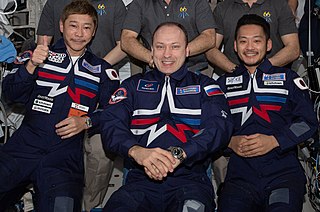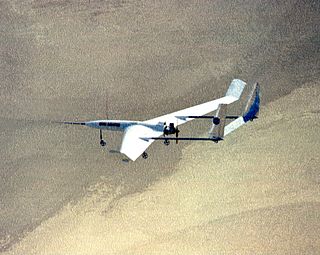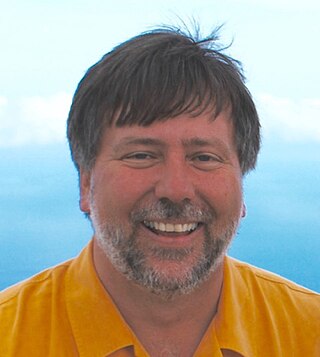
An aerobot is an aerial robot, usually used in the context of an unmanned space probe or unmanned aerial vehicle.

Space tourism is human space travel for recreational purposes. There are several different types of space tourism, including orbital, suborbital and lunar space tourism.

Biosphere 2 is an American Earth system science research facility located in Oracle, Arizona. Its mission is to serve as a center for research, outreach, teaching, and lifelong learning about Earth, its living systems, and its place in the universe. It is a 3.14-acre (1.27-hectare) structure originally built to be an artificial, materially closed ecological system, or vivarium. It remains the largest closed ecological system ever created.

Private spaceflight refers to spaceflight developments that are not conducted by a government agency, such as NASA or ESA.

A life-support system is the combination of equipment that allows survival in an environment or situation that would not support that life in its absence. It is generally applied to systems supporting human life in situations where the outside environment is hostile, such as outer space or underwater, or medical situations where the health of the person is compromised to the extent that the risk of death would be high without the function of the equipment.

High-altitude balloons or stratostats are usually uncrewed balloons typically filled with helium or hydrogen and released into the stratosphere, generally attaining between 18 and 37 km above sea level. In 2013, a balloon named BS 13-08 reached a record altitude of 53.7 km.

Romanian Cosmonautics and Aeronautics Association, also known as ARCAspace, is an aerospace company based in Râmnicu Vâlcea, Romania. It builds rockets, high-altitude balloons, and unmanned aerial vehicles. It was founded in 1999 as a non-governmental organization in Romania by the Romanian engineer and entrepreneur Dumitru Popescu and other rocket and aeronautics enthusiasts. Since then, ARCA has launched two stratospheric rockets and four large-scale stratospheric balloons including a cluster balloon. It was awarded two governmental contracts with the Romanian government and one contract with the European Space Agency. ARCASpace is currently developing a three-stage, semi-reusable steam-powered rocket called EcoRocket and in 2022 has shifted its business model to Asteroid mining.
Dragon is the name of a family of spacecraft developed and produced by American private space transportation company SpaceX. The first family member, now referred to as Dragon 1, flew 23 cargo missions to the ISS between 2010 and 2020 before retiring. With this first version not designed for carrying astronauts, it was funded by NASA with $396 million awarded through the Commercial Orbital Transportation Services (COTS) program, with SpaceX being announced as a winner of the first round of funding on August 18, 2006.

Taber MacCallum is the co-founder and co-CEO of Space Perspective, a human spaceflight company planning to take people and payloads to the edge of space by balloon, and the former Chairman of the Commercial Spaceflight Federation (CSF). He is co-founder and former CTO of World View Enterprises, a stratospheric balloon company using its un-crewed Stratollite for remote communications and sensing. MacCallum was also a founding member of the Biosphere 2 design team and a crew member from the original two-year mission inside the materially-closed ecological system.

Paragon Space Development Corporation is an American company headquartered in Tucson, Arizona. Paragon is a provider of environmental controls for extreme and hazardous environments. They design, build, test and operate life-support systems and leading thermal-control products for astronauts, contaminated water divers, and other extreme environment explorers, as well as for uncrewed space and terrestrial applications.

The idea of sending humans to Mars has been the subject of aerospace engineering and scientific studies since the late 1940s as part of the broader exploration of Mars. Long-term proposals have included sending settlers and terraforming the planet. Proposals for human missions to Mars have come from agencies such as NASA, CNSA, the European Space Agency, Boeing, and SpaceX. Currently, only robotic landers and rovers have been on Mars. The farthest humans have been beyond Earth is the Moon, under the Apollo program.

The Review of United States Human Space Flight Plans Committee, better known as the HSF Committee, Augustine Commission, or Augustine Committee, was a group convened by NASA at the request of the Office of Science and Technology Policy (OSTP), to review the nation's human spaceflight plans to ensure "a vigorous and sustainable path to achieving its boldest aspirations in space." The review was announced by the OSTP on May 7, 2009. It covered human spaceflight options after the time NASA had planned to retire the Space Shuttle. A summary report was provided to the OSTP Director John Holdren, White House Office of Science and Technology Policy (OSTP), and NASA Administrator on September 8, 2009. The estimated cost associated with the review was expected to be US$3 million. The committee was scheduled to be active for 180 days; the report was released on October 22, 2009.

A Mars aircraft is a vehicle capable of sustaining powered flight in the atmosphere of Mars. So far, the Mars helicopter Ingenuity is the only aircraft ever to fly on Mars, completing 67 successful flights covering 15.499 km (9.631 mi) in 2 hour, 1 minutes and 4 seconds of flight time.

Inspiration Mars Foundation was an American nonprofit organization founded by Dennis Tito that in 2013 proposed to launch a crewed mission to flyby Mars in January 2018, or 2021 if they missed the first synodic opportunity in 2018.

World View Enterprises, Inc., doing business as World View, is a private American near space exploration and technology company headquartered in Tucson, Arizona, founded with the goal of increasing access to and the utilization of the stratosphere for scientific, commercial, economic, and military purposes.

Robert Alan Eustace is an American computer scientist who served as Senior Vice President of Engineering and first Senior Vice President for Knowledge at Google until retiring in 2015. On October 24, 2014, he made a free-fall jump from the Stratosphere, breaking Felix Baumgartner's world record. The jump was from 135,890 feet (41.42 km) and lasted 15 minutes, an altitude record that stands as of 2023.

Jim Cantrell is an American entrepreneur, mechanical engineer and road racer. He is the CEO and co-founder of Phantom Space Corporation, which aims to build space transportation technology. After working at the French Space Agency CNES and the NASA Jet Propulsion Lab, he worked as an independent consultant to aerospace companies for fifteen years and was on the founding teams of SpaceX and Moon Express. Cantrell was SpaceX's first vice president of business development and Elon Musk's industry mentor when SpaceX launched in 2002.
The future of space exploration involves both telescopic exploration and the physical exploration of space by robotic spacecraft and human spaceflight.

The GUSTO mission is a high-altitude balloon mission that carry an infrared telescope to measure fine-structure line emission from the interstellar medium. The mission was developed by NASA's Explorers Program, and was launched in December 2023 from Antarctica.
Deimos-One is an American spaceflight technology development company working on an AI powered, autonomous UAV rocket system to move payloads to space. As of January 2021, the company has completed a successful prototype test flight, reaching an altitude of 30 km (19 mi).

















